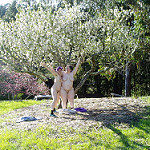An interview with Jaron Lanier, https://lareviewofbooks.org/article/delete-your-account-a-conversation-with-jaron-lanier/#!
So the problem is that when people say, “Oh, we use social media for social justice,” they’re typically correct. And yet in the longer story they’re really vulnerable to a far greater backlash than they would have gotten if they used another technique. At the end of the day, it’s hard to say whether they really benefited or not.
I disagree with what Lanier seems to be trying to say here. Of course if your activism reaches more people you are going to get more backlash. Are the specific people advocating for change ever going to be the ones to personally benefit for that change? Rare!
What they want to do is take whatever input people put into the system and find a way to turn it into the most engagement possible. And the most engagement comes from the startle emotions, like fear and anger and jealousy, because they tend to rise the fastest and then subside the slowest in people, and the algorithms are measuring people very rapidly, so they tend to pick up and amplify startle emotions over slower emotions like the building of trust or affection.
Interesting, and makes me think of Stardew Valley and its slow building of relationships between the player-character and the NPCs, relationships that have to be maintained. I also thought of the first example I was aware of, of the seemingly pointless exchange of tokens of approval in a social network, which I think was my friend Yoz creating something called “Sweeties” in Ning. And tangentially, of all the feminist sf utopias where there are barter based economies. Build in and opting into “slower” economies of attention could be possible – Excuse me while I go invent actual real life friendship, and the postal system – But seriously, I like this point and the only real answer to it may be to point this out to folks and for us all to seriously think about how we want to spend our time.
I am also thinking of my essay on culture clashes and the underlying assumptions of the trolls of the 00s with particular feminist communities. One assumes that showing that you are harmed is evidence you need to be harmed more in order to do you the favor of toughening you up. The other values its “hugbox” (a term used as a pejorative by the trolls) ie, its social contract to be supportive, kind, and to value the courage of vulnerability.
There is something to thinking “well, we SHOULD be alarmed and upset” about how things are – I think that is mistaking the early or middle phases of consciousness raising for a desirable steady state of being. It is normal in my view to have something of a breakdown as we try to integrate awareness of our participation in harmful, terrible or evil events and systems. As we see these truths we have to form some kind of narrative about what is happening and what we’re doing. That is where we’re at right now in public discourse – we are in a phase of rolling chaos and dis-integration.
Another article: This particle physics news was neat to see, as my ex partner used to work on these sorts of experiments (including AMANDA, the precursor to Ice Cube).
There is an open call for submissions to Cripple Punk Zine:
Our goal is to continue spreading radical disability acceptance to as many people as we can. We want to help raise disabled people’s self worth and self esteem, support disabled content creators, and create more spaces for disabled people to unapologetically be themselves. Every single disabled person deserves to feel empowered!
We are currently accepting submissions for the first issue, which will answer the question, “What is Cripple Punk?” and what cripple punk means to different people. The first issue should cover topics central to the cripple punk movement, like fighting ableism, embracing diversity, becoming empowered, and rejecting the roles mainstream society expects you to fit into.
I may write something and send it on.
I enjoyed this essay by Harry Giles (a rec from Sumana) on nurturing vs. shock in performance art.
Learning how to care for your audience is actually far more aesthetically interesting and politically disruptive than working out how to shock them.
This fits well with reading Lanier’s interview.
On shock and harm in art:
In each of these works, it is clear the people are actively harmed by the art, and this raises vital artistic and political questions. Who is it that is harmed, and why? Is it worth it? In Pussy Riot’s case, the punk gig offends worshippers and people who believe in a certain sanctity of the church space, who feel violated, but I would argue that in this case the violence is justified in the cause of attacking a patriarchy whose foundations rest in part on that very sanctity. But these are not easy arguments to make, and they are not artworks that I think can be taken or performed lightly.
I thought of myself and some of the activism I have done, for example, times I have been naked for a cause. Was my going shirtless at riot grrrl concerts or stripping down for a picture for body positivity with Nakedjen in various places a positive, transgressive act, or a rude, offensive, illegal, non consensual violation of other people’s space that possibly harmed someone? Is it different from Kavanaugh flashing Ramirez at a frat party and if so, how? My view here is that the potential harm is important to acknowledge, and that the expression, intention, exuberant joy, humor, etc. was worth the risk, and the context has to be considered.
